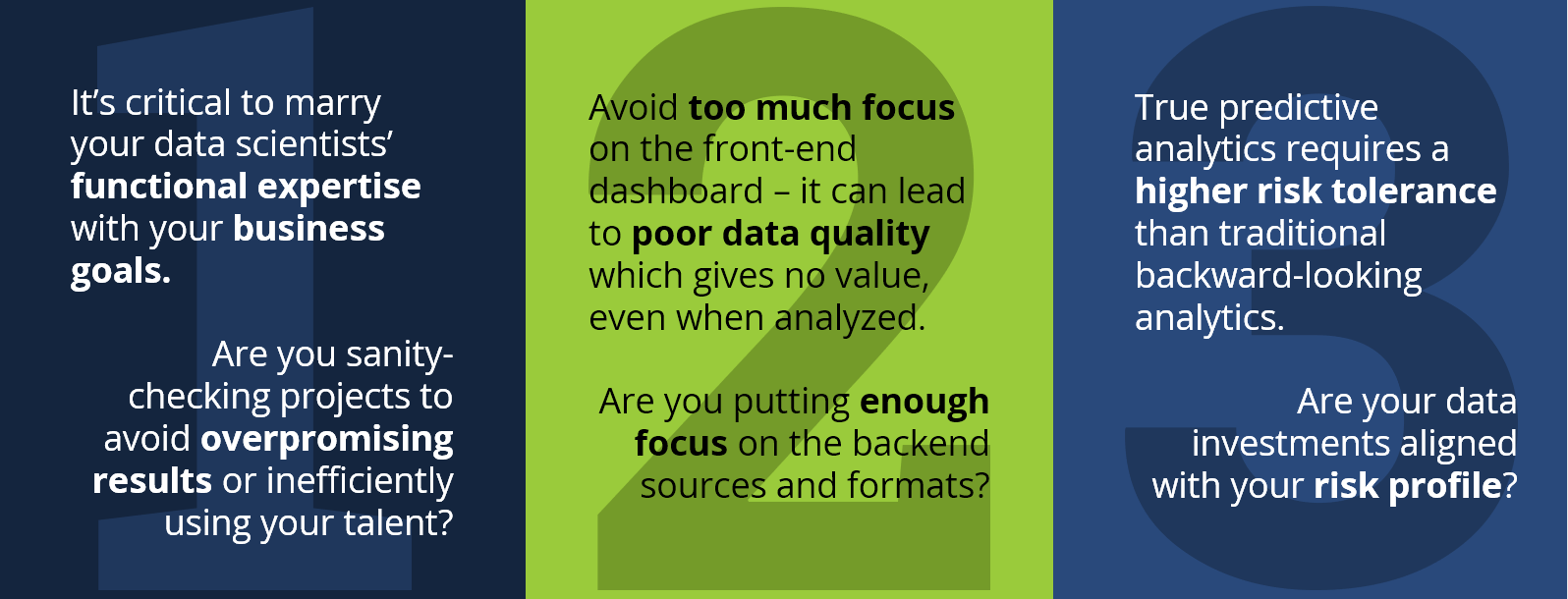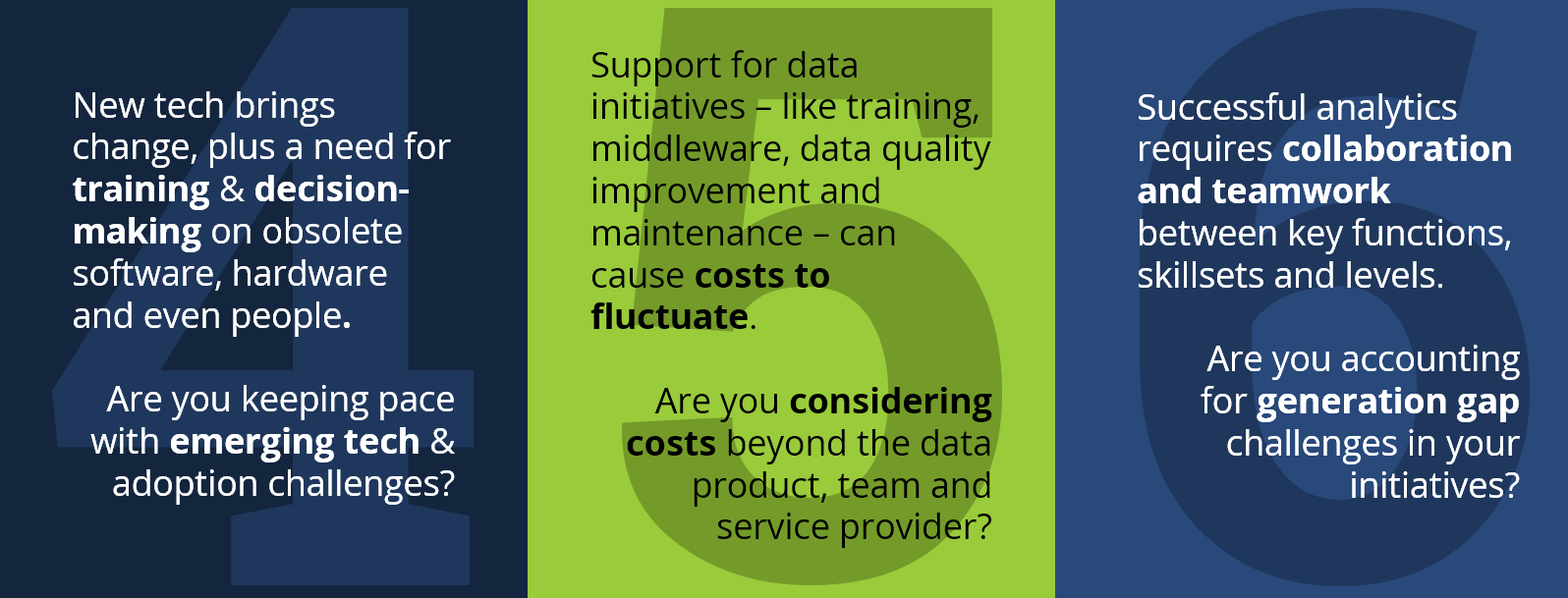Famous detective-fiction writer Arthur Conan Doyle once said, “The temptation to form premature theories upon insufficient data is the bane of our profession.” Today, the same could be said about the field of data science and analytics.
With increasing pressure on technology to deliver tangible business outcomes, organizations have been turning their attention toward their data science and analytics goals. And even more so since the pandemic triggered an economic collapse that looms large. With numerous data science projects and jobs on the line, it’s time to evaluate whether the analytics hype train is worth getting a seat on!
Let’s look at some of the key challenges.

#1 The Over-Promising Data Scientist
One of our clients once jokingly said, “I don’t know the question, but data science and analytics is the answer.” It’s not far from the truth. Too much hype inevitably leads to intense delivery pressure. Because it’s viewed as the one-stop solution for the world’s problems, data science and analytics has become famous for overpromising.
Organizations often commit the mistake of assembling large inhouse data-science teams without thinking of the long run. Having specialized data scientists is great. But what about managing that talent pool and their growth and marrying their functional expertise with business goals? Most organizations struggle with this and are subject to failed projects.
#2 D for Data
You can have data without information, but you cannot have information without data.
Most projects are characterized by a high degree of clarity and focus on the front end (dashboards) coupled with low focus on the backend (data sources and formats). With data coming from multiple sources and passing through multiple channels and people, its integrity is often compromised. And when data quality is poor, analysis of that data is useless.
Integrating data sources is a huge challenge, and many companies implement middleware as a potential solution to address it. Despite this, there are often scenarios with unclean data in wrong formats or data mismatched with the machine learning models. This is, for all accounts and purposes, a dead end.
#3 Mind(set) over Matter
The right mindset is one that is strategic about analytics – beyond just the technology. Analytics is as much art as it is science.
Take descriptive and predictive analytics. Descriptive analytics focuses on visualization of data available now. It is, thus, usually considered a science. Predictive analytics goes beyond the present and is focused on forecasting. It, thus, goes beyond pure data science and takes into account business context, tacit knowledge, intuitive prediction, etc. Since this is more of an art, it involves more risk than descriptive analytics. Everyone loves a good forecast but not necessarily the risk involved.
Risk aversion often manifests as inadequate data access for the provider. Many departments are hesitant to share data. This nips the ambitious data science project in the bud!

#4 Keeping Pace with Technology
Rapid strides in digital tech are great but keeping pace with technological change and the rate of adoption is not easy. Equally daunting for clients and solution providers, new technology brings in its wake system change, training requirements and challenging decision-making around obsolete software, hardware and even people. The result? Added pressure on data science and analytics projects from both delivery and cost perspectives.
#5 Fluctuating Costs
Data science and analytic projects require significant investment beyond selecting a world-class product, building a team and hiring a service provider. Additional costs include training, middleware, data quality improvement initiatives and ongoing maintenance.
Caution!
While the goals of data science and analytics projects almost always include driving costs down, they can lead to insights that might dictate investments. With burgeoning investments and the comparatively slower process of data integration, analysis and insights, it’s important to think of this as a marathon and not a sprint.
#6 The Collaboration Challenge
Data science is not an isolated domain. Succeeding requires serious teamwork between various functions, skillsets and levels. Teams can experience difficulties resulting from generation gaps.
What can you do to counter these challenges?
Overcoming the challenges of data science and analytics challenges requires specific solutions, tailor-made for a company and its culture. But these guidelines can get you started:
- Outsource to experts as much as possible while maintaining an in-house team of leaders and managers.
- Commit holistic long-term dedication that ensures you don’t cut corners in cost, data quality or keeping pace with technology.
- Focus on integration of services, products, systems and data sources. Data integrity is paramount!
- Do not overpromise and underdeliver. This is especially important for providers.
- Calibrate, communicate, collaborate. Rinse. Repeat.
- Do not forego common sense. This is the key to success in any data science and analytics project.
We believe in talking the talk. So, let’s talk. Share your challenge or question related to data science and analytics and our expert will get in touch with you.
